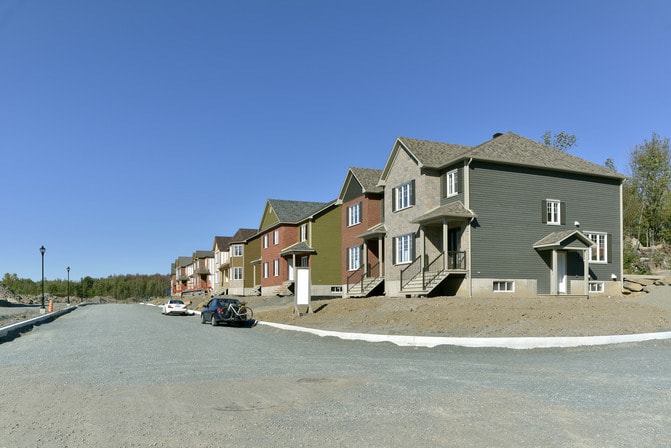When you’re buying a lot or land for your new home, the level of excitement builds when you think you may have found that “right” site. In Tip #3, our previous post about 8 Tips for Buying Residential Lots and Land for a New Home, we discussed due diligence, computer research and the Spaghetti Test as initial steps to eliminate properties that do not meet your requirements. Now we dig deeper into the due diligence process.
The Site Visit
So if you think you found property that might pass the Spaghetti Test, then you absolutely, positively have to do a site visit and walk the property as a critical part of the process for buying land.
Your computer research and your property visits go hand in hand, but there are some things you simply can’t do while sitting at a computer. So now is the time to explore what you have researched, put your feet on the ground and use your senses to see, hear or smell things that either could be potential issues…or that may help you discover something wonderful that guides you closer to the potential lot for your new home.
Due Diligence With Your Feet
You probably did some drive-through visits while evaluating communities, choosing a home builder and considering lots for sale. Now it’s time to get out of the car and really get a feel for both the neighborhood and, in particular, the lot.
The amount of effort involved for a site visit often depends on the size and condition of the property. It’s easier to walk a cleared 1/3 acre building lot in a new development than it is to walk a 40 acre wooded home site in the mountains. And buying a lot in a recently developed subdivision generally does not require as much due diligence as undeveloped land.
Either way, plan to walk the land and learn as much as you can (be sure to get permission if you need it). Look for site conditions that may not be seen clearly – or at all – on satellite images.
- Grade: Is the property level or does it have elevation changes? A sloping lot may not appeal to everyone, but for some it may be ideal for incorporating a walk-out basement, water feature or outdoor entertaining areas.
- Drainage: Take water into consideration when evaluating a lot and the potential placement of your home. You may find that the “perfect” place for your patio turns out to be a boggy area. The debris near a “gentle stream” may be a sign that it becomes a raging river in heavy rain. Would the natural slope of the lot direct water toward your new home? Talk with your builder about options for improving the area with grading and drainage work.
- Surroundings: You may learn that what looked like an open field on the map actually is a right of way for a power line. Or you can confirm whether the nearby apartments are sufficiently buffered from view by trees and landscaping. Your site visit may reveal unexpected benefits like a spectacular view, beautiful trees, wildlife or the ideal location for your vegetable garden.
- Sensory Overload: A site visit also can help you discover that a nearby freeway is too loud or that a factory a mile away emits an unpleasant odor. One member of our team walked away from a property because of several vocal and “enthusiastic” dogs living next door.
Consider Lifestyle
As part of your site visits, also look at where the building lot is within the neighborhood and consider how that will affect your lifestyle. For example:
- Do you want a short walk to the clubhouse and pool? Maybe you prefer to be further away…especially on swim meet nights!
- Corner lots are nice, but they also require more maintenance on two street fronts and sacrifice some privacy.
- What appears to be a private lot at the end of a stub street may end up being on a busy cut-through if the road is extended.
- Is the lot located in a lively area with plenty of kids playing outside and families socializing, or a quieter, more private street with less activity?
Visit at different times of the day and days of the week to get a feel for what it may be like to live there and, if it’s a new development, consider how the area could change after the neighborhood has been completed. If it’s an established neighborhood, note whether the homes and properties are being well maintained. Don’t be afraid to ask neighbors for information and opinions and, as always, consult the experts: experienced real estate agents and builders can help guide you through the process.
Our next posts will describe some more technical items that you should review as part of your due diligence, to make sure that what you feel is a great lot does not have other limitations or restrictions that can prevent it from actually being a great site for your new home.
Also see our page on Tips & Resources for Buying Lots & Land, where you will find many helpful resources for lot and land buyers and tips about using LotNetwork.com to help you in your search.
Related articles
- 8 Tips for Buying Residential Lots and Land for a New Home (lotnetwork.com)
- Decide Your Community Style: Tip #1 for Buying Lots and Land (lotnetwork.com)
- Choosing Your Builder: Tip #2 for Buying Lots and Land (lotnetwork.com)
- Check from Satellite to Street: Tip #3 for Buying Lots and Land (lotnetwork.com)
- The Site Visit: Tip #4 for Buying Lots and Land (lotnetwork.com)
- Utilities & Infrastructure: Tip #5 for Buying Lots and Land (lotnetwork.com)
- Roads & Access: Tip #6 for Buying Lots and Land (lotnetwork.com)
- Research Title & Restrictions: Tip #7 for Buying Lots and Land (lotnetwork.com)
- Use Real Estate Professionals: Tip #8 for Buying Lots and Land (lotnetwork.com)


